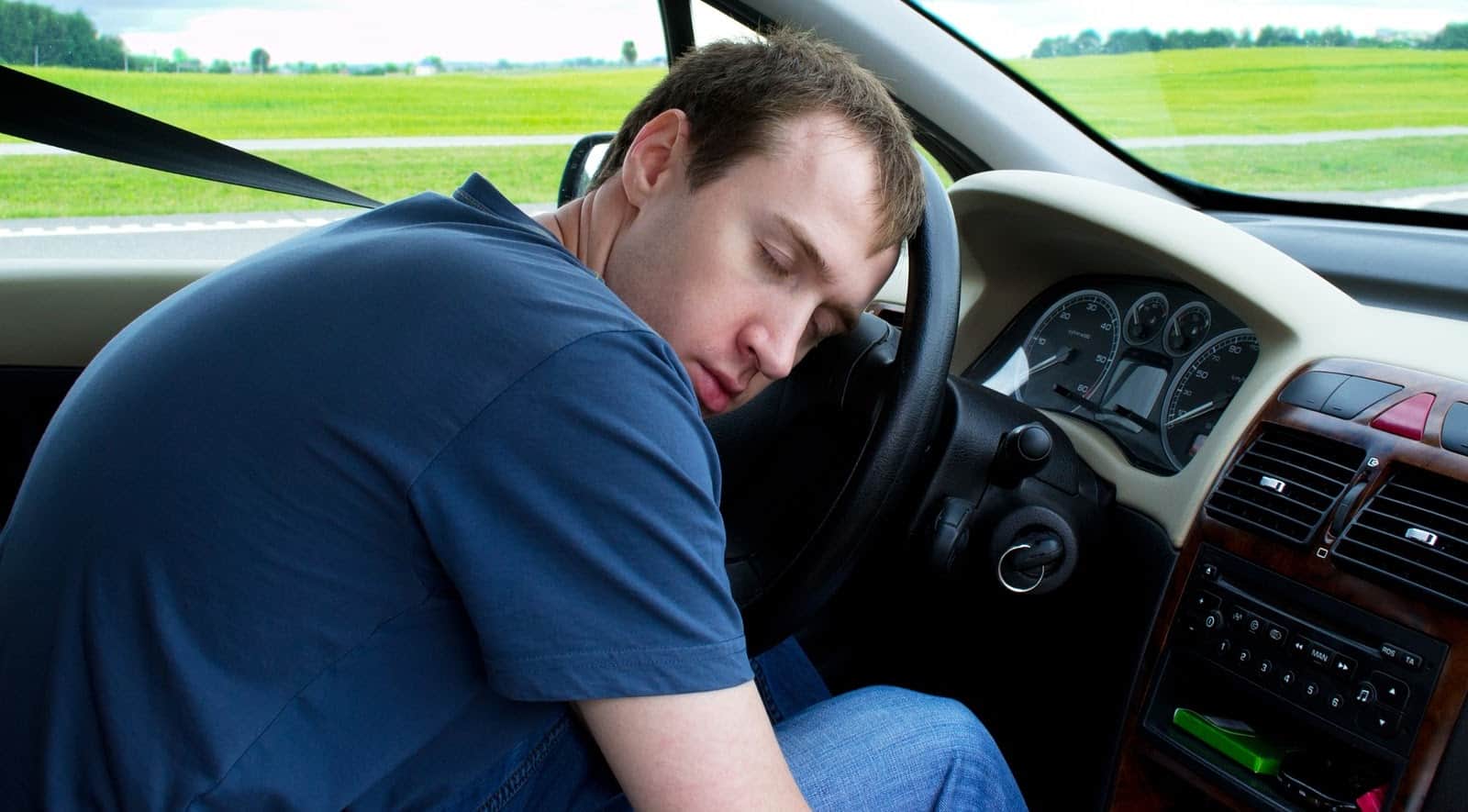A multi-car accident on a dangerous stretch of Route 222 in Berk’s County, Pennsylvania has resulted in numerous injuries and the death by commercial truck of two area residents. The accident reportedly occurred when the commercial truck driver, fifty-year-old Steven Bernier, fell asleep behind the wheel. According to Berks County D.A., John T. Adams, Bernier was unable to stop in time. Adams stated, “When he woke up, he laid on the brakes, but needless to say the tractor-trailer careened across his lane of traffic, impacting two vehicles waiting to leave the Dunkin’ Donuts.”

The accident occurred before the early-morning rush hour at approximately 6:30 a.m. Bernier states that he had begun his shift roughly 5 hours before the fatal accident. While Bernier’s inattentive driving was the chief cause of the accident, the stretch of highway may have contributed. The stretch of Route 222 (Allentown Pike), near the junction with Route 73, reduces from four high-speed travel lanes down to two lanes. This heavy merge often results in long lines of cars at the many traffic lights in the area. This increases the likelihood that a driver will be unable to slow down in time resulting in a rear-end collision. That is exactly what occurred in this fatal Berk’s County commercial truck accident.
NHTSA, part of the US Department of Transportation (US DOT), is responsible for vehicle safety on US highways and roadways. The agency has promulgated a number of rules & regulations to reduce the occurrences of drowsy driving. The agency screens for medical conditions that can contribute to excessive drowsiness, such as sleep apnea, and limits the number of hours a commercial driver can work. The remainder of this post will examine the danger of drowsy driving caused by sleep apnea and some of the federal regulations intended to prevent accidents due to fatigued commercial drivers.
The Nationwide Problem of Drowsy Commercial Drivers
NHTSA collects, analyzes and publishes traffic data. In its March 2011 edition of Traffic Safety Facts, the agency compiled nationwide crash data from 2005 to 2009. According to the information compiled, fatigue or drowsy driving was implicated in 2.5-percent of all fatal crashes. Furthermore, drowsy driving played some role in 2.2-percent of crashes causing personal injury and 1.4 percent of incidents where only property damage occurred. This means that drowsy driving accounts for approximately 900 deaths and 37,000 injuries each year.

The most recent medical research cited by the National Center on Sleep Disorders Research (NCSDR) and an NHTSA expert panel, characterizes sleep as a neurobiological need that is controlled by one’s circadian rhythms. When fatigue builds or certain conditions like sleep apnea are present, this need for sleep can become irresistible and the driver may not even be aware that he or she has fallen asleep.
Unfortunately, the effects of fatigue impair one’s ability to drive long before sleep becomes irresistible. In fact, the focus & attention deficits caused by tiredness can begin when a driver is only moderately tired. Fatigue also slows the processing of information and impairs one’s decision-making ability. The effects of inadequate sleep are caused or exacerbated by irregular sleep patterns that do not adhere to the regular sleep-wake cycle, shift work, sleep deficits, use of sedating medications, the consumption of alcohol, conditions like sleep apnea, and other factors.
The Current Federal Regulations Regarding Commercial Drivers with Sleep Apnea & Other Conditions
Commercial motor vehicle operators must meet certain physical conditions to be considered physically qualified to drive a commercial truck. In general, a driver qualifies if he or she can meet the physical requirements set forth in the regulations and has undergone a qualifying medical examination as set forth in §391.43. §391.41(a)(3). However, the presence of a medical impairment or condition, like uncontrolled sleep apnea, can make one physically unfit to be a commercial driver.

The physical requirements require that the driver does not have a medical history or clinical diagnosis of condition or impairment such as:
- “A respiratory dysfunction likely to interfere with his/her ability to control and drive a commercial motor vehicle safely.” Respiratory conditions can include sleep apnea, COPD or other conditions that can interfere with his or her driving ability. §391.41(b)(5).
- “Epilepsy or any other condition which is likely to cause loss of consciousness or any loss of ability to control a commercial motor vehicle.” 391.41(b)(8). Sleep apnea can also cause a commercial driver to unexpectedly lose consciousness due to fatigue.
- “Mental, nervous, organic, or functional disease or psychiatric disorder likely to interfere with his/her ability to drive a commercial motor vehicle safely.” 391.41(b)(8).
Aside from the lack of physical impairments, a commercial driver also must undergo a medical exam performed by a medical examiner who is listed in the National Registry of Certified Medical Examiners. § 391.43(a). The medical examiner, “…must be aware of the rigorous physical, mental, and emotional distress placed on the driver of a commercial motor vehicle.” Furthermore, “…the medical examiner is required to certify that the driver does not have any physical, mental, or organic condition that might affect the driver’s ability to operate a commercial motor vehicle safely.” § 391.43.
Hours of Service Regulations are Designed to Reduce the Number of Drowsy Commercial Drivers
NHTSA has also promulgated hours-of-service provisions for commercial drivers in an effort to reduce the number of fatigued drivers on the roadways.
The hours-of-service rules impose a limitation on the duration of time that a commercial driver may operate his or her commercial truck. Essentially, there are three limitations on a drivers’ hours that are somewhat akin to a daily limit, a daily driving “window, and a weekly limitation. While these limits are actually rolling, thinking of it in terms of daily and weekly limits can make the purpose of each regulation clearer.
As per 395.3(a)(3), a driver may drive for 11-hours once they begin their journey. But, those hours may not be consecutive. 395.3(ii) mandates that a driver must take a 30-minute break if more than 8 hours have passed since he or she began driving. When the driver reaches the 11-hour limit, he or she must remain off-duty for 10 hours before that particular limit will be reset.

The driver must also perform their 11 hours of permitted driving within the 14-hour window. 395.3(a)(2). The 14-hour window is renewed when a driver remains off-duty for at least 10 hours.
Finally, there is a limit of 60 or 70 driving hours per a 7 or 8 day period, respectively. This limit closely approximates floating weeks that are not tied to the calendar. At the end of each day, the driving hours from the first day of your period are wiped away and all days during the period move up one slot.
Is Enough Being Done to Protect Pennsylvanians and Motorists?
NHTSA has promulgated these physical requirements, medical requirements, and hours-of-service rules to protect motorists against commercial drivers who are unfit to be on the roadways due to fatigue or a medical condition that can exacerbate sleep deficits and feelings of exhaustion. Unfortunately, the rules are not foolproof, but measures to improve sleep hygiene among commercial drivers and technological advancements like fatigue detection systems & automatic braking systems may result in additional safety improvements. However, companies that continue to be willing to put profits before the law and safety duties, can cause others to suffer catastrophic injuries or to be wrongfully killed. If you or your family have been impacted by a commercial vehicle accident due to driver fatigue, inattention, lack of qualifications, or other reasons contact a Berks County car accident lawyer of The Reiff Law Firm by calling (215) 709-6940 or contact us online.













